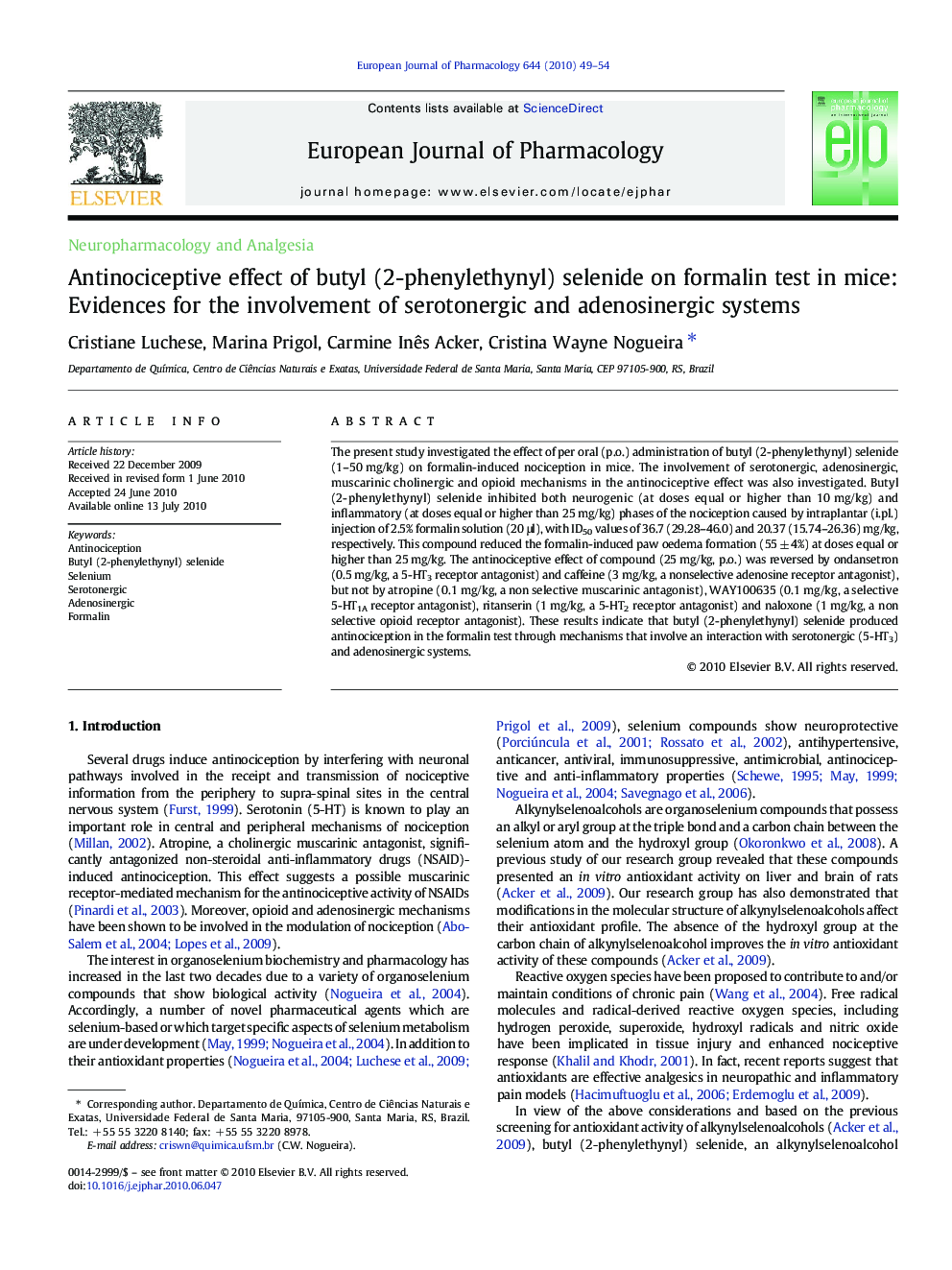| Article ID | Journal | Published Year | Pages | File Type |
|---|---|---|---|---|
| 5830520 | European Journal of Pharmacology | 2010 | 6 Pages |
Abstract
The present study investigated the effect of per oral (p.o.) administration of butyl (2-phenylethynyl) selenide (1-50 mg/kg) on formalin-induced nociception in mice. The involvement of serotonergic, adenosinergic, muscarinic cholinergic and opioid mechanisms in the antinociceptive effect was also investigated. Butyl (2-phenylethynyl) selenide inhibited both neurogenic (at doses equal or higher than 10 mg/kg) and inflammatory (at doses equal or higher than 25 mg/kg) phases of the nociception caused by intraplantar (i.pl.) injection of 2.5% formalin solution (20 μl), with ID50 values of 36.7 (29.28-46.0) and 20.37 (15.74-26.36) mg/kg, respectively. This compound reduced the formalin-induced paw oedema formation (55 ± 4%) at doses equal or higher than 25 mg/kg. The antinociceptive effect of compound (25 mg/kg, p.o.) was reversed by ondansetron (0.5 mg/kg, a 5-HT3 receptor antagonist) and caffeine (3 mg/kg, a nonselective adenosine receptor antagonist), but not by atropine (0.1 mg/kg, a non selective muscarinic antagonist), WAY100635 (0.1 mg/kg, a selective 5-HT1A receptor antagonist), ritanserin (1 mg/kg, a 5-HT2 receptor antagonist) and naloxone (1 mg/kg, a non selective opioid receptor antagonist). These results indicate that butyl (2-phenylethynyl) selenide produced antinociception in the formalin test through mechanisms that involve an interaction with serotonergic (5-HT3) and adenosinergic systems.
Related Topics
Life Sciences
Neuroscience
Cellular and Molecular Neuroscience
Authors
Cristiane Luchese, Marina Prigol, Carmine Inês Acker, Cristina Wayne Nogueira,
